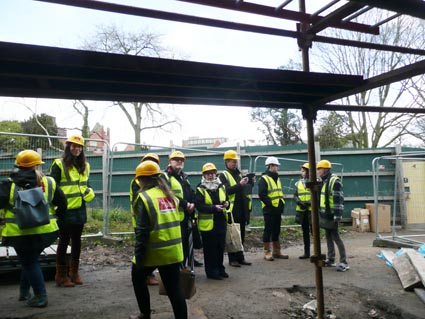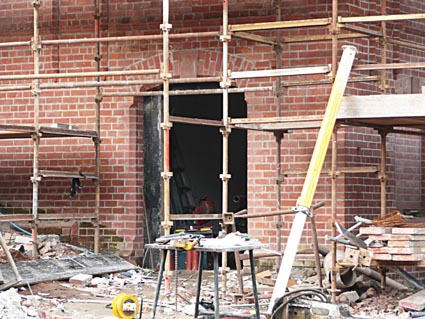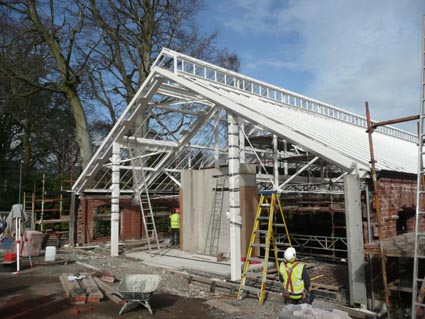Tropical Ravine
- Pre-restoration
- The restoration
- Rebuilding begins
- The Ravine opening
- The restored Ravine
- Plants of the restored Ravine
The Tropical Ravine has been restored
This complex project has been possible thanks to finance from the Heritage Lottery Fund, Belfast City Council and the Friends of Belfast Botanic Gardens. During the work, stakeholder groups were permitted a ‘hard-hat’ visit to view progress. We were impressed by the high standard of the building work which is sensitive to the historic nature of the building. For example the replaced key stones over the windows closely match the originals, the new doorway that has been cut in the south wall has the same ornamental brickwork as used elsewhere in the original. The new guttering is in the correct style. Inside, much of the original stone work was been re-instated, although path widths have been increased to allow easier access. The modern hi-tec heating and misting system has greater potential for meeting the needs of a range of plants.
Pre-restoration
The state of the ravine before restoration. The roof had become so precarious that it was necessary to close the ravine and to cover the roof with a net to prevent sheets of glass crashing on to the gardens outside. It was also becoming increasingly difficult to maintain adequate temperature control for the plants.
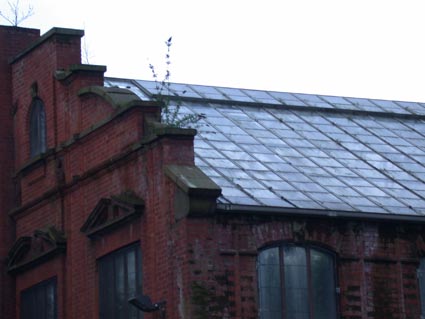
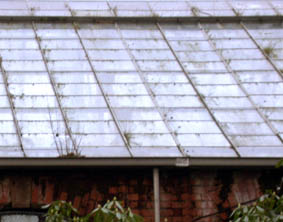
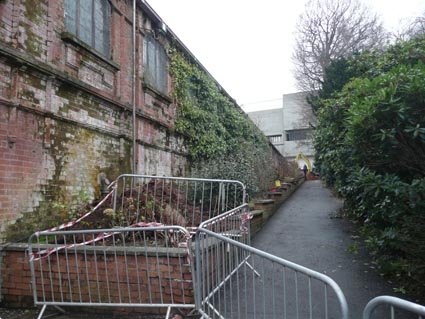
The restoration
The first stage of the restoration project was the removal of plants to the safety of the working greenhouses behind the Palm House. Some of the larger plants were moved into the Palm House and a few had to remain in the Ravine where they were protected from the weather and from the building work by individual plastic covers and heaters.
Structural details of the stonework were revealed as the restoration proceeded.
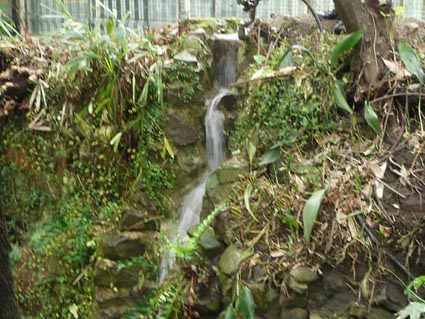

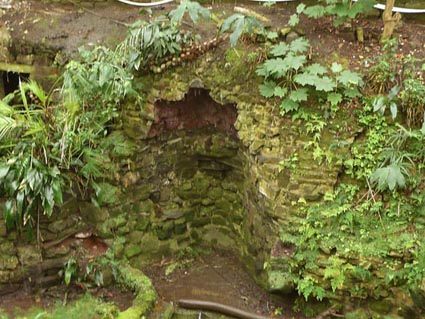
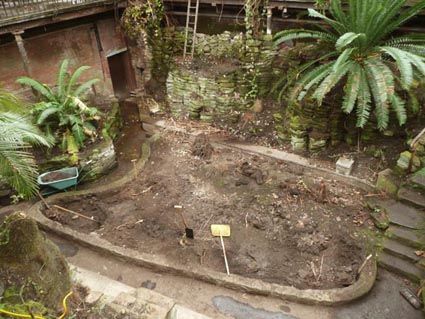
Rebuilding begins
Clearing rubble and plants was a long and painstaking process. Most of the original peat blocks were retained as a ‘spore bank’ of mosses and ferns. Serious deterioration of foundations and wall were carefully repaired.
The Friends Group, and other stakeholder groups had the privilege of visiting the site on a few occasions to see progress

